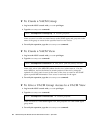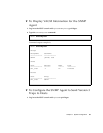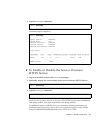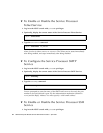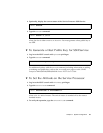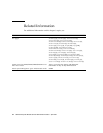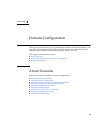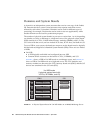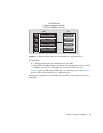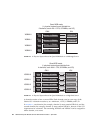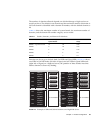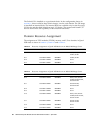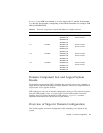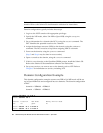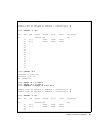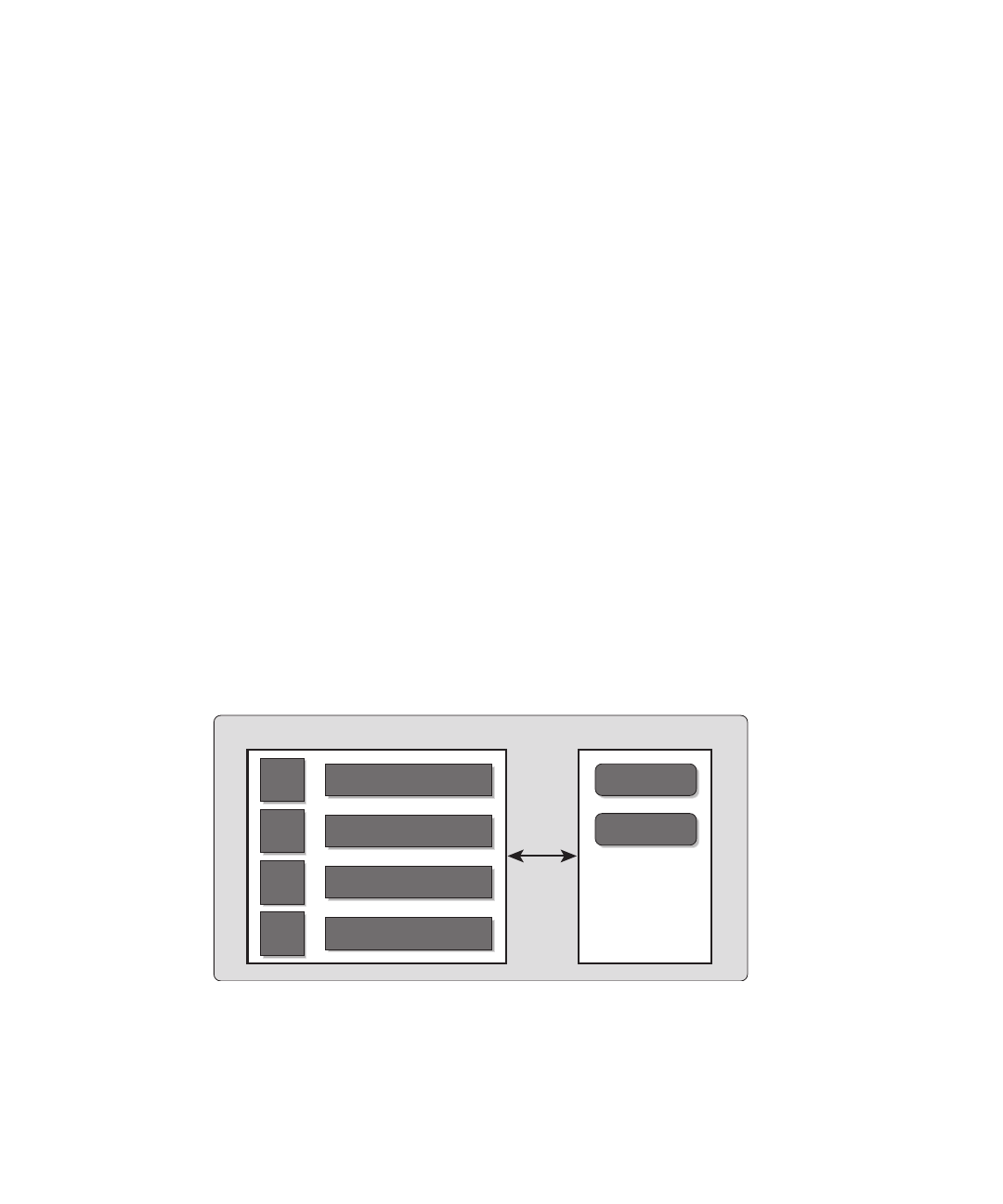
46 SPARC Enterprise Mx000 Servers Administration Guide • April 2007
Domains and System Boards
A domain is an independent system resource that runs its own copy of the Solaris
OS. Domains divide a system’s total resources into separate units that are not
affected by each other’s operations. Domains can be used for different types of
processing; for example, one domain can be used to test new applications, while
another domain can be used for production purposes.
The number of physical system boards in your server varies from 1 to 16, depending
on whether you have a midrange or a high-end server. One physical system board
(PSB) consists of 4 CPUs, 32 dual inline memory modules (DIMMs), and I/O. The
I/O varies with the server, and can include PCIe slots, PCI-X slots, and built-in I/O.
To use a PSB in your system, the hardware resources on the board must be logically
divided and reconfigured as eXtended System Boards (XSBs). There are two modes
of XSBs:
■ Uni-XSB
■ A PSB logically undivided and configured into one XSB
■ Contains all the resources on the board: 4 CPUs, 32 DIMMs, and I/O
FIGURE 4-1 shows a PSB in Uni-XSB mode on a midrange server, and FIGURE 4-2
shows a PSB in Uni-XSB mode on a high-end server. The CPU modules and
memory modules are known as the CPU/memory board unit (CMU) and the I/O
devices are contained in the I/O unit (IOU).
FIGURE 4-1 A Physical System Board in Uni-XSB Mode on an M4000 Midrange Server
CPU
Uni-XSB mode
(1 physical system board with
4 CPUs, 32 DIMMs, and I/O)
I/O device
I/O device
Memory - 8 DIMMs
Memory - 8 DIMMs
Memory - 8 DIMMs
Memory - 8 DIMMs
CPU
CPU
CPU
CMU IOU



